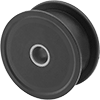Filter by
Length
Component
Pitch
Chain Style
Roller Width
DFARS Specialty Metals
Export Control Classification Number (ECCN)
Roller Diameter
Maximum Temperature
Working Load
Width
Thickness
Material Handling
Power Transmission
Measuring and Inspecting





















































